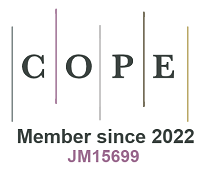Accelerating ultrastable catalyst exploration for large-scale water splitting
Keywords
Electrolytic water splitting can convert renewable electricity from sources such as solar and wind into green hydrogen, which is key for achieving zero carbon emissions[1,2]. The large-scale production of affordable green hydrogen is essential for advancing the industry. Proton exchange membrane water electrolyzers (PEMWEs) are considered the most effective due to their high current density, fast response, and low gas crossover. The oxygen evolution reaction (OER) at the anode is critical for generating the required protons and electrons[3]. Improving OER catalyst activity and stability is vital, with Iridium oxide (IrOx) as the only suitable catalyst, though its high cost and limited availability present challenges[4].
To minimize iridium use and improve performance, researchers have investigated strategies like alloying[5], compositing[6], and supporting IrOx nanoparticles (NPs) on metal oxides[7]. While these methods have enhanced catalytic activity, stability continues to be a challenge, with the best voltage degradation rates still falling short of the 2026 target of the U.S. Department of Energy (DOE)[8]. IrOx NP instability, such as dissolution, re-deposition, detachment, and aggregation, contributes significantly to performance loss. Solutions such as electron donation to prevent excessive oxidation and anchoring iridium sites on supports show promise. However, current catalysts still fail to meet both activity and stability targets, making further development a priority.
A new strategy proposed by Prof. Bo Zhang’s group embeds the catalyst directly into the support by forming Ir NPs on its surface [Figure 1][9]. This method, known as “Ripening-Induced Embedding” (RIE), utilizes polyethylene glycol (PEG) to reduce iridium salts to uniform Ir NPs, which are then loaded onto a metal oxide support through heating in ethylene glycol. The heating induces Ostwald ripening, which helps grow unaged support particles and embeds the NPs within the support. To ensure the success of the RIE process, the support must mature quickly enough to match the fast nucleation rate of Ir NPs. Based on Lifshitz and Slyozov’s theory[10], particle growth under diffusion control is proportional to surface energy, meaning supports with higher surface energy grow faster. Stable crystal planes, such as the (111) surface of face-centered cubic metal oxide supports, grow more slowly, which hinders the embedding of rapidly nucleating NPs. In contrast, high-energy crystal planes, such as the (211) surface, grow faster, enabling successful NP embedding. Under PEMWE-OER conditions, these Ir NPs oxidize to IrOx, and the lattice constant increases. Electron donation from the support, like CeOx, prevents Ir dissolution, causing the NPs to expand and anchor within the support. To achieve the desired embedded catalyst, the growth of high-energy crystal planes must be both rapid and sustainable, matching the nucleation rate of the Ir NPs.
Figure 1. Illustrative overview of the embedding method (This figure is reproduced with permission from Zhang et al.[9]).
The authors synthesized sub-10 nm CeOx particles with rough surfaces, promoting the exposure of high-energy crystal planes. The nucleation of Ir NPs on CeOx revealed an imbalance in growth kinetics between the support and NPs, preventing successful embedding. Since ultrasound-induced cavitation accelerates nucleation and disrupts growth pathways, stabilizing high-energy crystal planes and promoting surface restructuring, fragmentation, and recrystallization to enhance catalytic surface exposure. To resolve this, ultrasound was reintroduced during the Ir loading process, which accelerated CeOx maturation and enabled the successful embedding of Ir NPs with a depth of around 1 nm. The embedding process was observed using cryo-electron microscopy and electron tomography, demonstrating the critical role of the support’s high surface energy for the effectiveness of the RIE strategy. Additionally, kinetic Monte Carlo simulations revealed that the ultrasound-induced surface erosion of CeOx facilitated the embedding of Ir NPs by speeding up the maturation process.
The resulting RIE-Ir/CeOx showed impressive electrochemical activity (1.72 V at 3 A/cm-2) and stability (voltage degradation rate of 1.33 μV/h) with 0.4 mg/cm-2 PGM loading, meeting the U.S. DOE targets for PEMWE devices by 2026. RIE-Ir/CeOx has already reached the DOE’s ultimate target for voltage degradation rate (2.0 μV/h), ensuring it will last more than ten years. This catalyst offers superior performance, balancing activity, stability, and cost compared to other Ir-based PEMWE-OER catalysts. Meanwhile, the catalyst’s reliability was tested across ten PEMWE devices, demonstrating consistent performance at varying current densities. The RIE strategy enhances the activity and stability of various metal and metal oxide-supported catalysts, regardless of specific elements or compounds. These catalysts were tested in both the OER and hydrogen evolution reaction (HER) within PEMWE, as well as in NaBH4 hydrolysis for hydrogen production. When ZrOx was used as a support for OER, RIE-Ir/ZrOx showed improved stability, though its activity was less than RIE-Ir/CeOx due to ZrOx’s weaker electron donation. This opens up a unique pathway for the design of robust catalyst systems.
In the future, the rapid advancement of materials design and synthesis for large-scale water splitting relies heavily on high-throughput experiments, which allow for the efficient evaluation of a wide range of catalyst candidates and reaction conditions. This work includes extensive parallel repeat experiments, such as those using ten different PEMWE devices. In this context, the large usage of parallel repeat experiments, such as testing hundreds of catalysts across hundreds of different PEMWE devices at various current densities, will be a crucial approach. This kind of experiment will provide valuable insights into the stability and performance of catalysts under diverse operational conditions, enabling researchers to identify optimal configurations for industrial-scale applications. By conducting this kind of high-throughput experiment, researchers can quickly generate large datasets that inform the design of more efficient and stable catalysts.
In addition, artificial intelligence (AI) plays an increasingly vital role in accelerating the materials discovery process[11]. AI and machine learning algorithms can analyze experimental data at an unprecedented scale, identifying patterns and correlations that might otherwise go unnoticed. This capability allows for the prediction of catalyst performance under different conditions, guiding the selection of materials with high potential before they are synthesized and tested. Furthermore, AI-driven simulations can aid catalyst design by predicting properties and behavior, thereby optimizing the synthesis process and reducing trial and error in laboratory experiments. For example, very recently, a machine learning pipeline trained on 36,000+ oxides predicts Pourbaix decomposition energy from unrelaxed structures (77 meV/atom), enabling rapid screening of 2,070 new metal oxides for acid-stable, iridium-free oxygen evolution catalysts to meet growing green hydrogen demands[12]. The integration of high-throughput experimentation with AI-driven data analysis also has a profound impact on the evolution of PEMWE and membrane electrode assembly (MEA)-based N2 or CO2 electrocatalytic reduction systems. As the demand for efficient, scalable hydrogen production grows, and carbon dioxide conversion, these advanced techniques provide a pathway to discover catalysts that exhibit both high activity and long-term stability. By leveraging the synergy between experimental approaches and AI, researchers can accelerate the development of new materials, bringing us closer to achieving cost-effective, sustainable, renewable energy production on a large scale.
DECLARATIONS
Authors’ contributions
Made substantial contributions to conception and design of the study and performed data analysis and interpretation: Han, N.; Su, B. L.
Performed data acquisition and provided administrative, technical, and material support: Han, N.; Su, B. L.
Availability of data and materials
Not applicable.
Financial support and sponsorship
This work was supported by the National Natural Science Foundation of China (22293020 and 22293022), the International Science & Technology Cooperation Program (2021YFE0115800), Ministry of Science and Technology of China, the Program of Introducing Talents of Discipline to Universities-Plan 111 (No. B20002) from the Ministry of Science and Technology and the Ministry of Education of China and the Wallonia-Brussels International, Belgium (SUB/2021/IND493971/524448).
Conflicts of interest
Su, B. L. is Editor-in-Chief of the journal Chemical Synthesis. Su, B. L. was not involved in any steps of editorial processing, notably including reviewer selection, manuscript handling, or decision-making. Han, N. declares that there are no conflicts of interest.
Ethical approval and consent to participate
Not applicable.
Consent for publication
Not applicable.
Copyright
© The Author(s) 2025.
REFERENCES
1. Liu, W.; Niu, X.; Tang, J.; et al. Energy-efficient anodic reactions for sustainable hydrogen production via water electrolysis. Chem. Synth. 2023, 3, 44.
2. Han, N.; Zhang, X.; Zhang, C.; et al. Lowering the kinetic barrier via enhancing electrophilicity of surface oxygen to boost acidic oxygen evolution reaction. Matter 2024, 7, 1330-43.
3. Li, S.; Tang, D.; Jing, X. Metal-organic framework-based self-supported electrodes for oxygen evolution reaction. Chem. Synth. 2024, 4, 70.
4. Song, J.; Wei, C.; Huang, Z. F.; et al. A review on fundamentals for designing oxygen evolution electrocatalysts. Chem. Soc. Rev. 2020, 49, 2196-214.
5. Kwon, J.; Sun, S.; Choi, S.; et al. Tailored electronic structure of Ir in high entropy alloy for highly active and durable bifunctional electrocatalyst for water splitting under an acidic environment. Adv. Mater. 2023, 35, e2300091.
6. Seitz, L. C.; Dickens, C. F.; Nishio, K.; et al. A highly active and stable IrOx/SrIrO3 catalyst for the oxygen evolution reaction. Science 2016, 353, 1011-4.
7. Hao, S.; Sheng, H.; Liu, M.; et al. Torsion strained iridium oxide for efficient acidic water oxidation in proton exchange membrane electrolyzers. Nat. Nanotechnol. 2021, 16, 1371-7.
8. U.S. Department of Energy. Technical targets for proton exchange membrane electrolysis. 2022. https://www.energy.gov/eere/fuelcells/technical-targets-proton-exchange-membrane-electrolysis. (accessed 21 May 2025).
9. Shi, W.; Shen, T.; Xing, C.; et al. Ultrastable supported oxygen evolution electrocatalyst formed by ripening-induced embedding. Science 2025, 387, 791-6.
10. Lifshitz, I. M.; Slyozov, V. V. The kinetics of precipitation from supersaturated solid solutions. J. Phys. Chem. Solids. 1961, 19, 35-50.
11. Han, N.; Su, B. L. AI-driven material discovery for energy, catalysis and sustainability. Natl. Sci. Rev. 2025, 12, nwaf110.
Cite This Article
How to Cite
Download Citation
Export Citation File:
Type of Import
Tips on Downloading Citation
Citation Manager File Format
Type of Import
Direct Import: When the Direct Import option is selected (the default state), a dialogue box will give you the option to Save or Open the downloaded citation data. Choosing Open will either launch your citation manager or give you a choice of applications with which to use the metadata. The Save option saves the file locally for later use.
Indirect Import: When the Indirect Import option is selected, the metadata is displayed and may be copied and pasted as needed.
About This Article
Copyright
Data & Comments
Data


















Comments
Comments must be written in English. Spam, offensive content, impersonation, and private information will not be permitted. If any comment is reported and identified as inappropriate content by OAE staff, the comment will be removed without notice. If you have any queries or need any help, please contact us at [email protected].